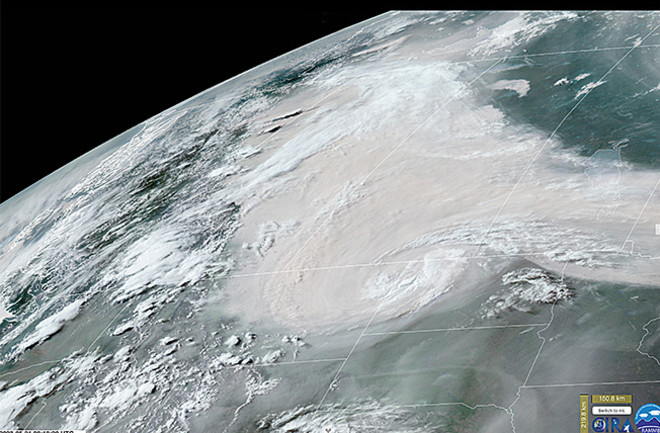On May 20, 2023, an incredible phenomenon occurred, captured by the GOES-16 satellite, showing what was described as a “smokestorm” by a climate scientist. This spectacular event unfolded as enormous amounts of smoke from raging wildfires in Alberta, Canada, were drawn into a low-pressure weather system spinning counterclockwise near the Canadian-American border. The screenshot above and the accompanying animation give a glimpse of this awe-inspiring sight.
The year has seen a staggering 500 wildfires scorching over 3,600 square miles of land in Alberta, equivalent to more than ten times the size of New York City. While the exact cause of most of these blazes has not yet been determined, as of May 20, 11 were confirmed to be ignited by lightning strikes, and 17 were attributed to human activity. Alberta has experienced unusually high temperatures, far above normal, along with strong winds – conditions that have contributed to the rapid spread of the fires. For instance, on May 4, temperatures in Fort McMurray, in the northern part of the province, reached a scorching record of 90°F, breaking the previous record by a staggering 20 degrees. On an average day, the high temperature for that date is only 55°F. Throughout the month, winds have frequently exceeded 25 miles per hour, and at times even surpassed 30 miles per hour.
The impact of wildfires on our environment and climate change cannot be overlooked. Rising temperatures, aridity, and drought have led to longer fire seasons across approximately 25% of vegetated regions globally since 1979. A recent report by the Intergovernmental Panel on Climate Change reveals that human-caused climate change has contributed to an increase in the area burned by wildfires in the forests of western North America. In fact, the report states that in this region, the higher temperatures resulting from human-caused climate change have doubled the area burned between 1984 and 2015, compared to what would have burned without these climate changes. This additional burnt area is larger than the entire land area of Switzerland. In one particularly devastating year in British Columbia, drought and high temperatures caused fires to engulf seven to eleven times more land than they would have without the influence of climate change.
